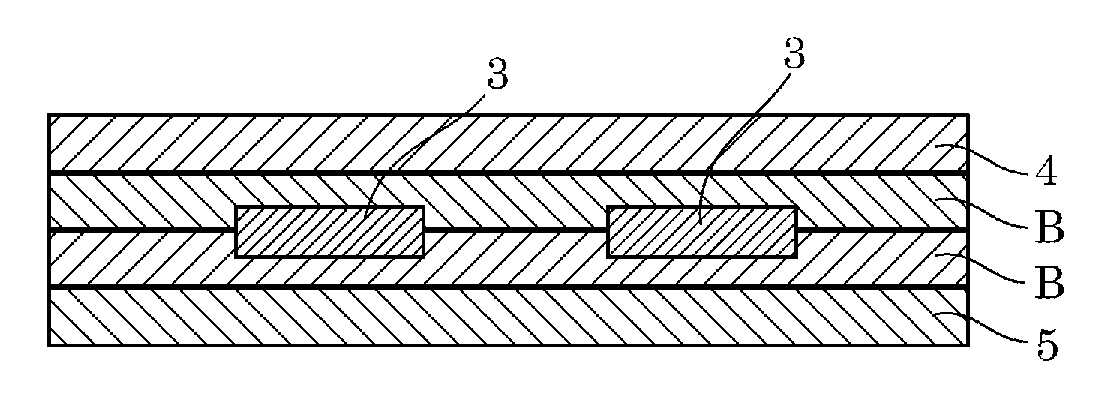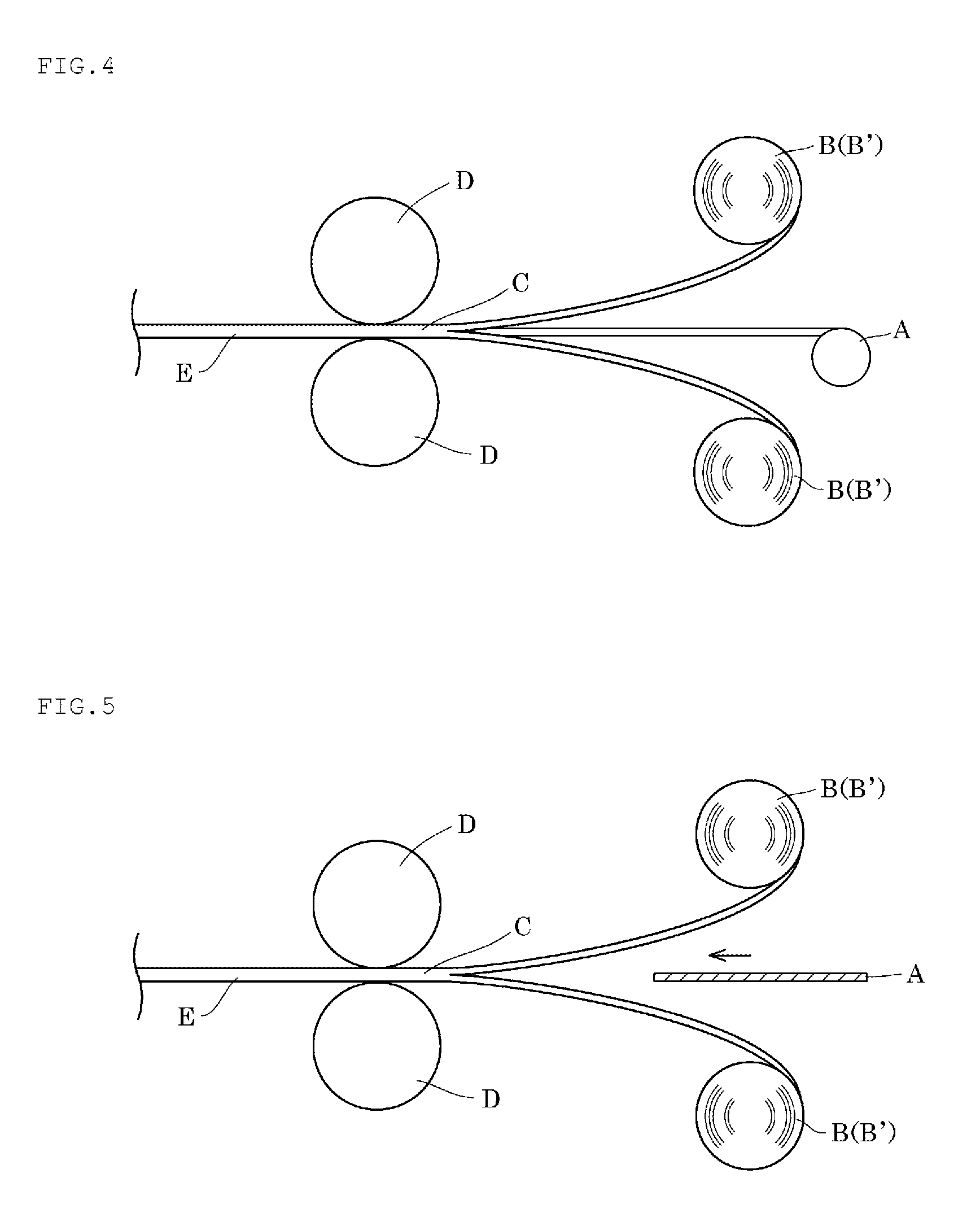Sealing material for solar cell, protective sheet for solar cell, and process for production of solar cell module
a solar cell and protective sheet technology, applied in vehicle sealing arrangements, vehicle components, synthetic resin layered products, etc., can solve the problems of deterioration of the durability of the solar cell module to be obtained, insufficient protective sheets for solar cell modules, and inability to produce protective sheets, etc., to achieve the effect of reducing the time required for this sealing step, reducing the time required for cutting and reducing the time required
- Summary
- Abstract
- Description
- Claims
- Application Information
AI Technical Summary
Benefits of technology
Problems solved by technology
Method used
Image
Examples
example 1 to 16
, Comparative Examples 1, 2, 6 to 7, and 10 to 14
[0076]While a composition for a sealing material for a solar cell containing 100 parts by weight of a modified butene-based resin prepared by graft-modifying a butene-ethylene copolymer having a prescribed butene content and a prescribed ethylene content given in Tables 1 to 4 with maleic anhydride and a prescribed amount given in Tables 1 to 4 of 3-glydoxypropyltrimethoxysilane (produced by Dow Corning Toray Co., Ltd.; trade name “Z-6040) or 3-acryloxypropyltrimethoxysilane (produced by Shin-Etsu Chemical Co., Ltd.; trade name “KBM-5103”) as a silane compound was fed into a first extruder and then melt-kneaded at 230° C., polyvinylidene fluoride (produced by ARKEMA; trade name “Kynar 720”) was fed into a second extruder and then melt-kneaded at 230° C. The composition for a sealing material for a solar cell and the polyvinylidene fluoride were fed to a joining die to which both the first extruder and the second extruder were connecte...
PUM
 Login to View More
Login to View More Abstract
Description
Claims
Application Information
 Login to View More
Login to View More - Generate Ideas
- Intellectual Property
- Life Sciences
- Materials
- Tech Scout
- Unparalleled Data Quality
- Higher Quality Content
- 60% Fewer Hallucinations
Browse by: Latest US Patents, China's latest patents, Technical Efficacy Thesaurus, Application Domain, Technology Topic, Popular Technical Reports.
© 2025 PatSnap. All rights reserved.Legal|Privacy policy|Modern Slavery Act Transparency Statement|Sitemap|About US| Contact US: help@patsnap.com



